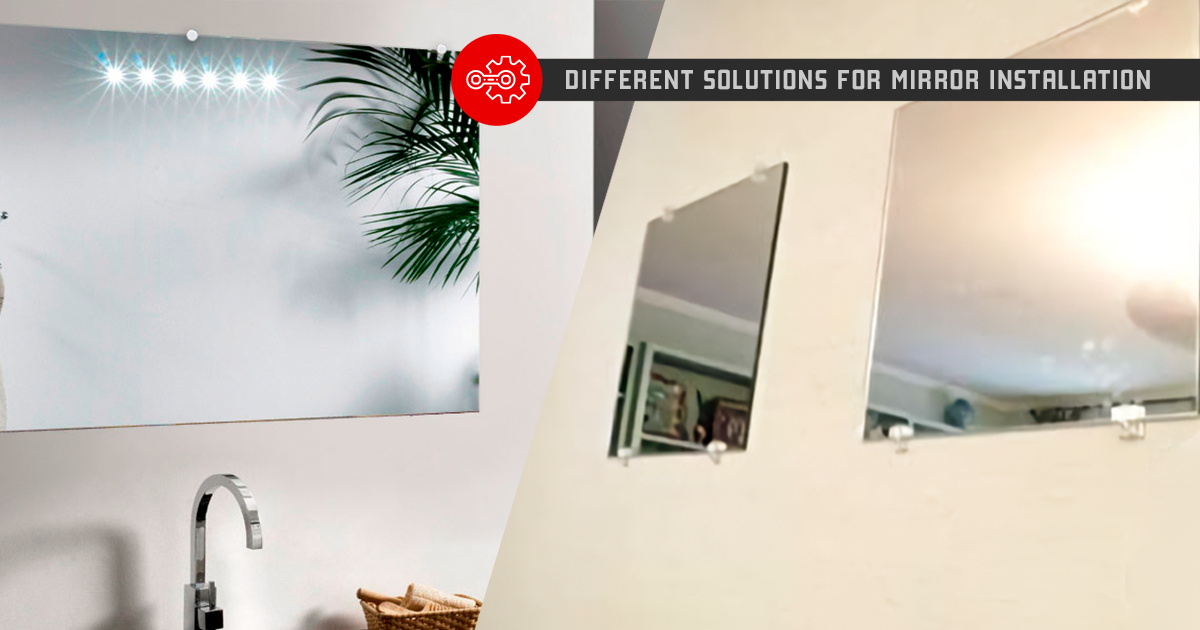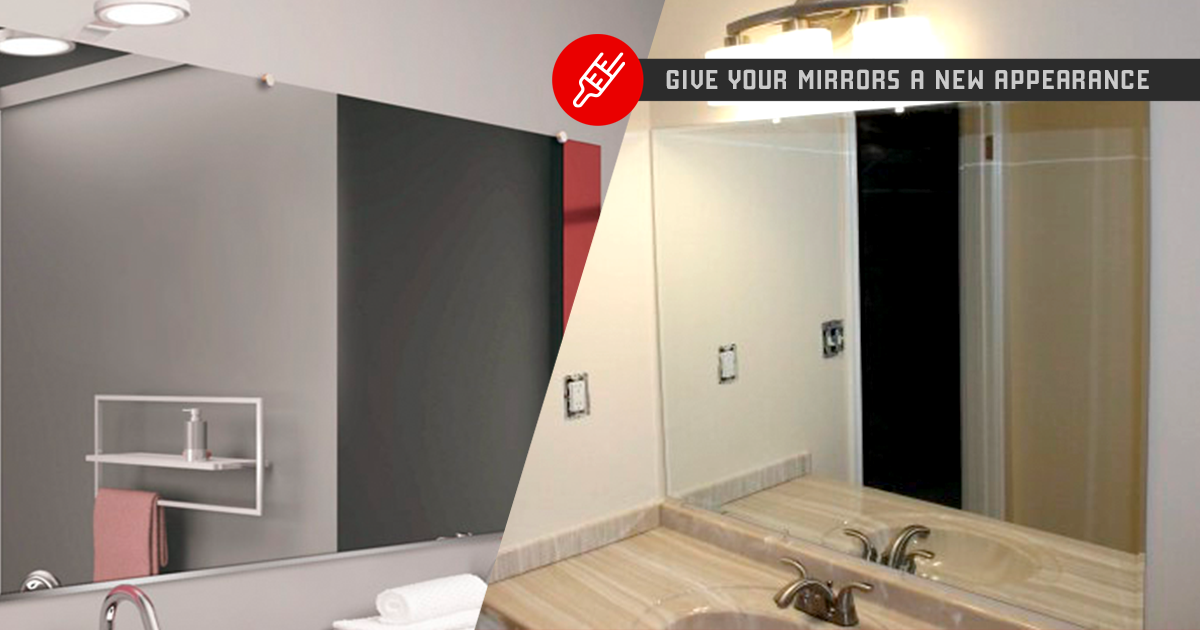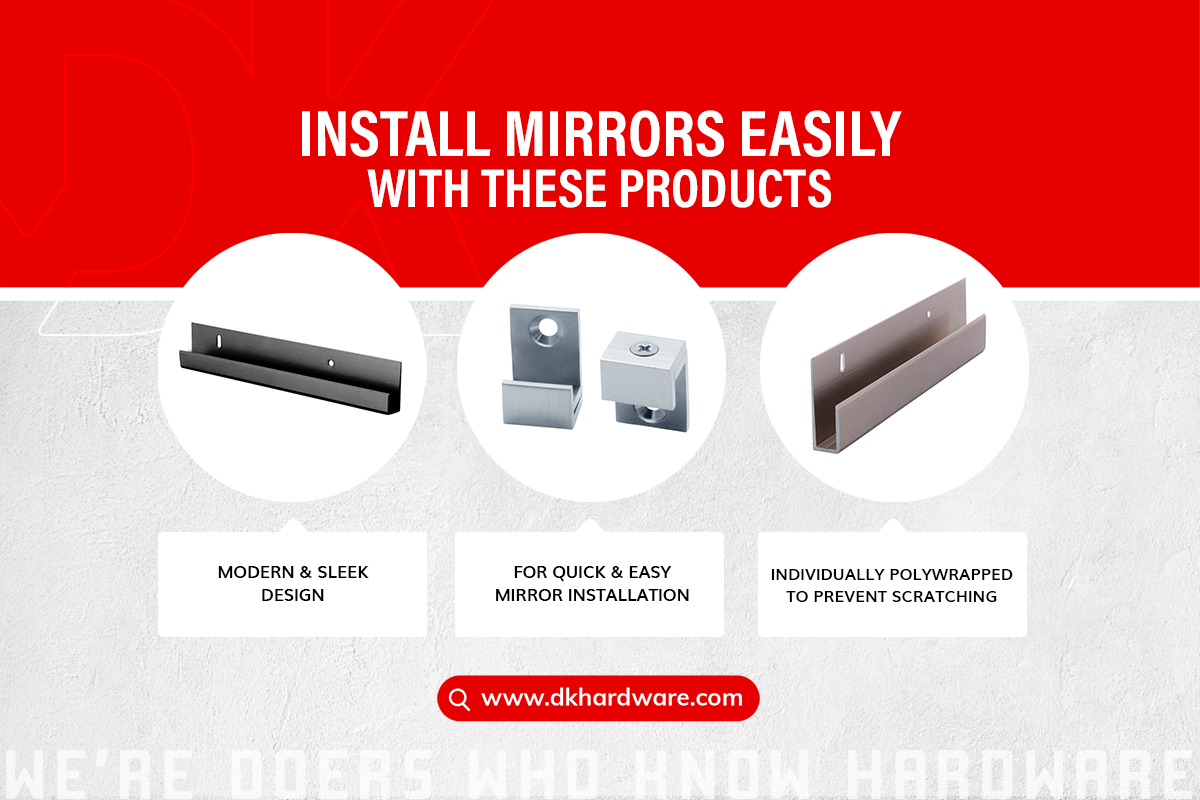Glass Installation Tools: Mirror Channels & Clips

Tracks and clips are the two most common choices for mirror installation. Both these methods are used by glass and mirror professionals, but certain circumstances indicate the use of one over the other. So, understanding your options and why glaziers use a specific technique for mirror installation will make it easy to select the best mirror installation methods for your place.

Using Clips to Hold Mirror in Place
Mirror clips are generally constructed of clear plastic for an unobtrusive look that does not detract from the mirror's clean lines. Each clip features a void where a fastener can pass through the clip and into the wall.
Mirror installation is often permanent or semi-permanent because mirror mastic or tough glue is used to stick it to the wall. You should consider using mirror clips if you are looking for a temporary installation – because you are renting your home or want to remodel it in a couple of years. They can be used on their own, making it easy for the mirror to be removed intact.
Sometimes, clips are the only feasible option for mirror installation. If the mirror has curved edges – circle, oval, or crescent – resting it on a track or channel is not an option. These mirrors are installed with the help of mirror clips. Although mirror mastic can hold the mirror on the wall, additional support from clips or a rigid surface is necessary.
Here are a few options for mirror clip sets from DK Hardware:
- CRL Nickel Plated E-Z Mount Mirror Clip Set : 655
- CRL Brite Chrome Quartet Mirror Clip Set : 3061501
- CRL Nickel Plated Adjustable Mirror Clip Set : 64114
- CRL Chrome 5/8" Wide Mirror Clip Set: MC01CH

Using a Track or Channel to Hold the Mirror in Place
A channel or track supports mirror glass that is not fastened with clips or resting on a permanent surface. A mirror with straight edges can easily sit on a solid surface, such as the trim, floor, or a backsplash, and then be attached to the wall with glue. However, there can be aesthetic or practical reasons for installing a mirror at some distance from any flat surface. For example, dance studio mirrors are often kept from the floor, and small wall mirrors are frequently hung at eye level in entryways, so they don't get kicked.
This is where a channel or track comes into play. These metal strips can be easily fastened to the wall where the bottom of the mirror is supposed to go. The mirror glass rests on this track for support and stability. You can use glue or clips along with the track to hold the mirror in place. There are two popular options for mirror tracks:
- L-bar – This bar has a slim profile and looks like a capital "L," so it is not visible once the mirror is installed. It will make an exceptional choice when a frameless look is desired.
- J-channel – J-channel is almost the same as L-bar except that its profile resembles the letter "J." A thin strip of metal is visible along the bottom of the mirror glass when we use a J-channel.
Check out a range of high-quality L-bars and J-channels at DK Hardware for your mirror installation purposes:
- CRL Bronze Electro-Static Paint 1/4" Aluminum L-Bar Extrusion: DV607BRZ
- Brixwell Black Electro-Static Paint 1/4" Standard Aluminum J-Channel: D636BL-CCP36
- Brixwell Brushed Nickel 1/4" Deep Nose Aluminum J-Channel: D645BN-CCP48
- CRL Brite Anodized 1/4" Aluminum L-Bar Extrusion: DV607BA

DK Hardware features a wide range of clips and channels for your various mirror installation needs. Click on any link on this blog to be redirected to some of the best options.
For any specific questions, feel free to reach out to us!
For quotation contact via email: sales@dkhardware.com or
Toll-Free: 877-509-8040
